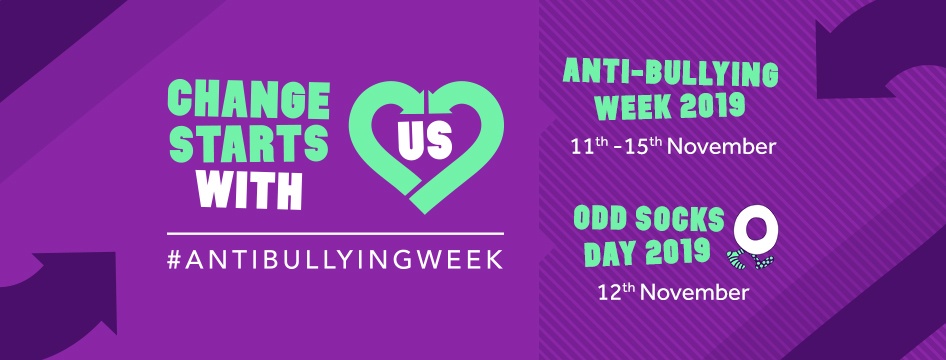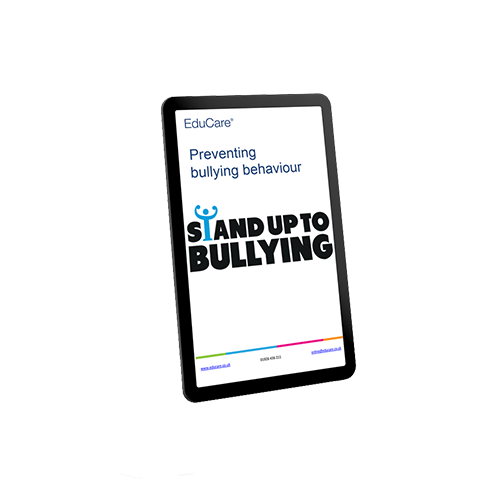
10 changes you can make today to help stop bullying
Anti-Bullying Week is celebrated from the 11th-15th November with the theme ‘Change Starts with Us’. Each year at least 80% of schools take part in the week, and the aim this year is to consider the role we all have to play in creating a culture where bullying behaviour is less likely to happen.
Lauren Seager-Smith, CEO of Kidscape, our partners for our Prevent Bullying course, has written ten changes you can make today to help stop bullying in your school community.
Many of you will already have put these in place, but it’s vital you keep checking in with your pupils, staff, parents and carers to see whether there is more you can do together.
- Listen. Consult with the whole school community about how safe they feel, and whether you could do more to stop bullying behaviour. This could be an annual survey or smaller focus groups with pupils and staff who statistically may be more likely to be impacted (e.g. disabled young people, children from a faith or race minority.
- Train your staff. It is very difficult to prevent bullying if the staff team have not been trained in bullying prevention and response. Kidscape and Educare have worked together to produce the Preventing Bullying online course.
- Create a culture of kindness and respect. It sounds trivial but staff and pupils who regularly show kindness and respect are creating a culture where bullying behaviour is out of place. You could introduce a culture framework where you agree on small kindnesses that create a better environment (e.g. greeting people, holding doors for one another, giving way, looking out for others, offering to help).
- Have zero tolerance for offensive language or comments. Agree language that is not acceptable in an age and development appropriate way and commit to always challenging offensive language and comments.
- Communicate who can help. Make sure all pupils and parents know who they can talk to if they have concerns about bullying, or have seen or heard something that is causing them concern. Consider putting up posters with photos of relevant staff,including how they can be contacted/ when they are available, and support pupils to be playground/bus friends where they look out for anyone who is lonely or upset.
- Map out any potential bullying hot spots. Work with pupils to map out the school and surrounding area and use stickers to identify areas where they feel safe or less safe. Consider practical changes you could make to increase their feelings of safety (e.g. more staff supervision in that area).
- Give time for pupils to share what’s on their mind. Don’t underestimate the power of circle time at any age. Make sure you build in time in the school day to slow down and create an environment where pupils can offload or raise any concerns. It can also be helpful to introduce mindfulness and meditation to the school day to help pupils manage any feelings of anxiety or distress.
- Create a place of safety. Pupils who struggle with peer relationships find break and lunch time the most difficult part of the day. Make sure your school always has a place where pupils can go to take part in shared activities or relax without feeling like they stand out (sometimes friendship benches can make pupils feel more exposed).
- Empower pupils to take the lead. Your anti-bullying strategy is much more likely to be successful if pupils take the lead. Consider setting up a bullying prevention student taskforce that works with staff to make these changes. You may also want to consider Kidscape peer mentoring training as a way of further empowering pupils to help one another.
- Celebrate the fact you take action to stop bullying. Anti-Bullying Week is a great opportunity to share your passion for bullying prevention, and to make it clear that everyone has a part to play. You may also want to consider signing up for the Kidscape and BIG Challenging Bullying Award.
For more advice and support with bullying, visit www.kidscape.org.uk.
Return to newsRelated content
Preventing Bullying
The purpose of the course is to help you understand, recognise and prevent bullying behaviour.
Read morePreventing Bullying
At the end of the course, learners will:
- Understand what bullying is, including the five components of bullying behaviour
- Identify who may be affected by bullying, as there are some groups of people who are likely to be more affected than others
- Understand the role technology can play in bullying behaviour (cyberbullying)
- Be able to recognise a child who may be being bullied and understand the damaging physical and emotional effects
- Be able to put actions in place to tackle bullying in their organisation or setting
Partner Spotlight: Kidscape
Kidscape are an anti-bullying charity and one of our expert partners for our Preventing Bullying online training course.
Read morePreventing bullying behaviour
This resource covers the process of creating an effective anti-bullying policy. It includes practical suggestions as well as links to additional reading to broaden and deepen your knowledge of bullying and cyber-bullying.
Read more(1)_500.jpg)


